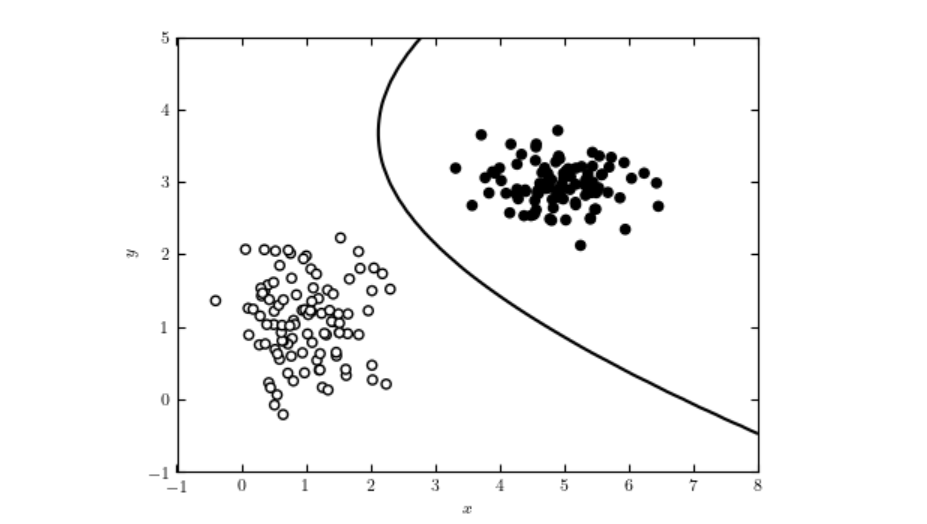Bayesian Networks
Bayesian Networks are probabilistic graphical models that use directed acyclic graphs to represent variables and their dependencies, enabling reasoning under uncertainty and supporting applications in AI, healthcare, and beyond.
A Bayesian Network (BN), also known as a Bayes Network, Belief Network, or Causal Network, is a type of Probabilistic Graphical Model that represents a set of variables and their conditional dependencies via a Directed Acyclic Graph (DAG). Bayesian Networks utilize the principles of graph theory and probability theory to model uncertain knowledge and perform reasoning under uncertainty. These networks are instrumental in handling complex domains where uncertainty is prevalent, allowing for efficient computation of joint probability distributions and facilitating inference and learning from data.
Components
Nodes
- Each node in a Bayesian Network represents a variable, which could be observable quantities, latent variables, or unknown parameters.
- These variables can be discrete or continuous and correspond to random variables (e.g., patient symptoms, asset prices).
- Nodes are linked by directed edges (arrows) indicating conditional dependencies.
- Advanced models may use multi-variable nodes for complex interdependencies.
Edges
- Edges are directed, connecting parent nodes to child nodes, indicating direct influence.
- The absence of a direct link implies conditional independence given other nodes.
- The directed acyclic structure prevents feedback loops, maintaining the integrity of causal inference.
Conditional Probability Tables (CPTs)
- Each node has a Conditional Probability Table (CPT) quantifying the effects of parent nodes.
- The CPT specifies the probability of each value of the node, given the values of its parents.
- CPTs define probabilistic relationships, enabling computation of marginal probabilities and supporting belief updating and decision-making.
Functionality
Bayesian Networks are used to compute joint probability distributions over a set of variables. They allow efficient computation through factorization into local, conditional distributions, making them valuable in high-dimensional spaces.
Inference
- Inference updates beliefs about unknown variables given known evidence.
- Uses Bayes’ theorem to propagate evidence, updating probabilities as new evidence arises.
- Common algorithms: variable elimination, belief propagation, Markov Chain Monte Carlo methods.
Learning
- Learning involves constructing network structure and estimating probabilities from data.
- Algorithms: expectation-maximization (parameter learning) and Bayesian structure learning.
- These processes help networks adapt to new information and improve predictive capabilities.
Applications
Bayesian Networks are widely used in fields that require modeling of complex dependencies and reasoning under uncertainty.
Medical Diagnosis
- Model probabilistic relationships between diseases and symptoms.
- Enable diagnosis based on observed symptoms.
- Integrate clinical data with expert knowledge, supporting decision-making.
Machine Learning
- Used for classification and prediction tasks.
- Handle incomplete data and incorporate prior knowledge.
- Foundation for robust predictive models, even with limited data.
Artificial Intelligence
- Used for decision-making, causal modeling, and anomaly detection.
- Enable encoding of causal relationships and probabilistic reasoning for intelligent systems.
Dynamic Bayesian Networks
- Dynamic Bayesian Networks (DBNs) model temporal processes and system evolution over time.
- Applications: speech recognition, financial forecasting, time-series analysis, sequential data understanding.
Benefits
- Handling Uncertainty: Structured approach for managing uncertainty in complex domains, suitable for real-world, noisy data.
- Combining Data and Expert Knowledge: Integrates observed data with expert knowledge, improving robustness and interpretability.
- Intuitive Interpretation: Graphical representation aids understanding and facilitates collaborative decision-making.
Challenges
- Scalability: Increased variables lead to exponential growth in complexity, requiring efficient algorithms.
- Parameter Estimation: Small or incomplete datasets complicate parameter estimation, necessitating techniques like regularization and Bayesian estimation.
Use Cases
- Risk Assessment: Used in risk management to evaluate likelihoods of risk scenarios for proactive planning.
- Cybersecurity: Predict cyber-attacks and vulnerabilities from historical data, enhancing organizational security.
- Genetic Analysis: Model genetic interactions for biological system understanding, aiding discovery of therapeutic targets and personalized medicine.
Integration with AI and Automation
In AI and automation, Bayesian Networks enhance chatbots and intelligent systems by providing probabilistic reasoning and decision-making frameworks. This enables systems to handle uncertain inputs and make informed, probabilistic decisions, improving adaptability and user interaction quality.
Frequently asked questions
- What is a Bayesian Network?
A Bayesian Network is a probabilistic graphical model that represents a set of variables and their conditional dependencies using a directed acyclic graph (DAG). It enables reasoning under uncertainty by modeling complex relationships.
- What are the main components of a Bayesian Network?
The main components are nodes (representing variables), edges (representing conditional dependencies), and conditional probability tables (CPTs) that quantify the relationships between connected variables.
- Where are Bayesian Networks used?
Bayesian Networks are used in healthcare for medical diagnosis, in AI for decision-making and anomaly detection, in finance for risk assessment, and in many other fields requiring reasoning under uncertainty.
- What are the benefits of Bayesian Networks?
They provide a structured approach to handle uncertainty, allow integration of data and expert knowledge, and offer intuitive graphical representations for better interpretability and decision-making.
- What challenges do Bayesian Networks face?
Challenges include computational complexity as the number of variables grows, and difficulties in parameter estimation when data is incomplete or limited.
Ready to build your own AI?
Smart Chatbots and AI tools under one roof. Connect intuitive blocks to turn your ideas into automated Flows.


